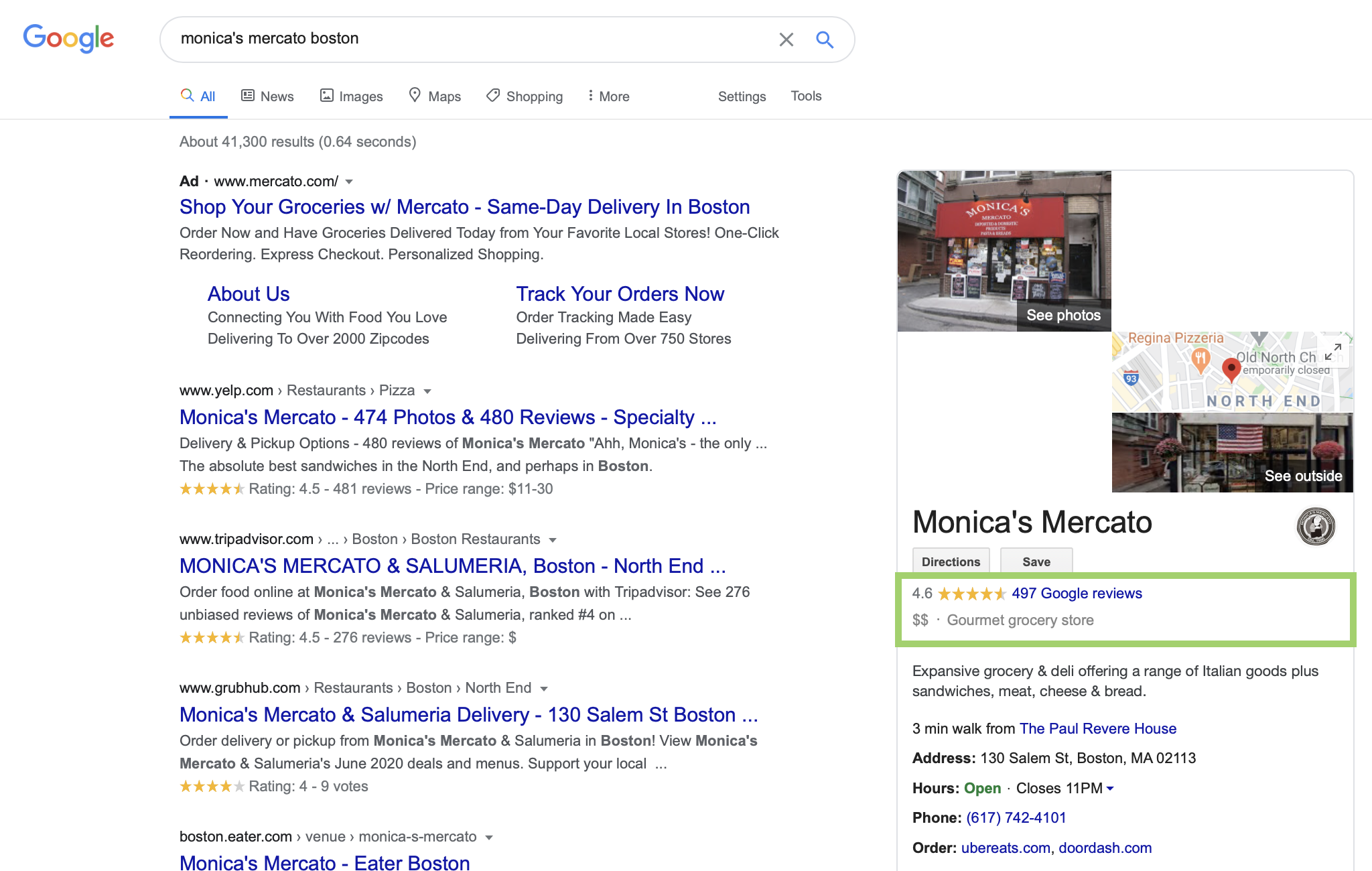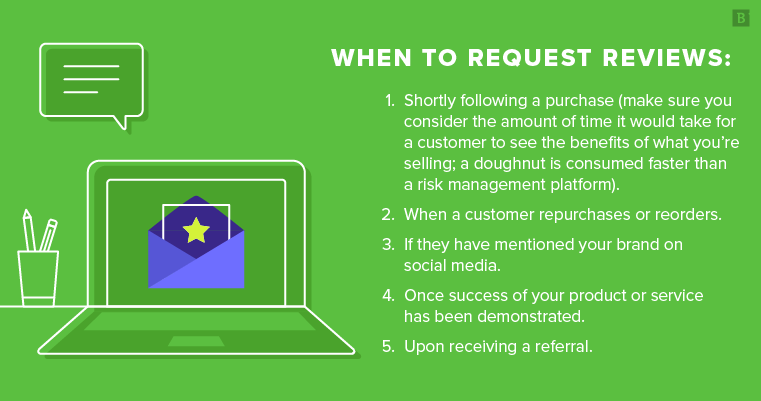More than 90% of customers read reviews before making a purchasing decision. This means most of your potential sales are at the mercy of what former customers say about your products or services.
Unfortunately, study after study has concluded that an unhappy customer is more likely to leave a review than a happy customer. The web has many more naysayers than people who sing praises – especially if you’re a brand. People expect satisfaction when they pay for something. If they don’t get it, you and all your potential customers will hear about it.
In a world where gratification is often expressed through silence, you’ll need a tactful way of asking your customers to speak up about what you’re doing right.
Enter the review request campaign.
Let’s walk through the basics of a feedback request, and take a close look at some of the very best review email template examples:
When to Request Reviews
First thing’s first — what is a review email? Well, to be honest, it’s exactly what it sounds like. Nothing more, nothing less. The long and short is that you’re sending an email to a customer or client asking them to review a product or service they’ve purchased.
The success of a review request campaign hinges upon seizing the most opportune moment to ask for a customer review. Here are 5 of them:
- Shortly following a purchase (make sure you consider the amount of time it would take for a customer to see the benefits of what you’re selling; a doughnut is consumed faster than a risk management platform). A good example of this would be asking a customer to review an item of clothing they bought a week ago. That accounts for the delivery period and gives them enough time to have tried on the clothing.
- When a customer repurchases or reorders. For instance, you might reasonably send a review request of a repeat purchase for, say, a mealkit after 2-3 days. That gives the buyer long enough to prepare the meal by the time you ask.
- If they have mentioned your brand on social media. This can be requested pretty much immediately after they post or comment, within the same day. After all, they already have the review ready to go if they’ve mentioned you.
- Once you’ve demonstrated a successful product or service. Follow up on your good work while they’re still pleased with the outcome.
- Upon receiving a referral. In this case, sending a review request email within 1 or 2 days of receiving the referral is just fine.
What Channels To Refer Reviewers To
Think about which of your brand’s online channels will benefit most from a positive review. Is it directly on a product page on your site? Is it in a niche industry forum? The Consumer Affairs Forum? Make it easy for customers to review your business by adding the necessary links for online reviews in your request email.
Here are a few examples of some of the most prominent review destinations across the web:
Social Media
Very rarely will you find a customer who isn’t on one social media platform or another. Make the most of this by adding review sections to your social media pages (where applicable, of course). Not only is social media a great and easy way for buyers to leave product reviews, but it also helps spread the word about your business. Other users can see the review pop up on their feed (thanks, algorithms!) which can entice new customers.
Amazon and Other Third-party Seller Sites
If you’re a B2C e-commerce company that generates most of its sales through Amazon, then make an Amazon review request the default for your company. The same applies for Etsy, eBay, Overstock and other e-commerce platforms. Third-party platforms are a great source of revenue for many businesses, and great online reviews can help accelerate purchasing.
Your Own Website
Alternatively, if you have an e-commerce store that doesn’t sell on third-party sites, encourage customers to leave a product review directly on your product pages. A B2B company can also use its website or blog to publish a customer testimonial, a case study, quotes from satisfied customers or all of these. For highly niche B2B verticals, targeted outreach to specific satisfied customers requesting a positive testimonial may be the only way to generate social proof, and your business page might be the only place to promote those positive reviews.
B2B Review Sites
A less niche B2B company may want to direct review traffic to another source. For example, a CRM company will benefit from user reviews on G2.com or Capterra.
Companies with a local presence – both B2B and B2C – should set themselves up on Google My Business (GMB) to manage their Google reviews and ratings. The overwhelming majority of web traffic occurs through search engines, meaning Google reviews are some of the first reviews that a potential customer searching for a local business will see.

Optimising a GMB profile is also essential for local search engine optimisation purposes. It helps ensure that your company is listed in Google under the correct business name, with the right hours, address and other details.
Other Business Directories
These might include:
- Yelp.
- TripAdvisor.
- Foursquare.
- The Yellow Pages.
- True Local.
How to Request Reviews (+ Email Templates)
You need to make it as easy as possible for customers to leave an online review – or provide any sort of customer feedback that could help your business improve, for that matter.
Someone who wants to throw a tantrum on the internet will actively seek out the biggest audience for their tirade. But a delighted customer will only give you an attaboy if it doesn’t take very much time out of their day.
Start by including a “review us” link in the email signature of any transactional emails, customer service emails, etc. The recipient need only click this link to be taken to a review platform of your choice.
Also consider leaving a “review us” or “provide feedback” form on your contact us page to solicit feedback. If you offer online support, you can link to this page, or another review channel, after each interaction.
Even then, you’ll need to reach out to customers to encourage them to offer feedback, leave a review or speak positively on behalf of your brand. And there’s no better way to do that than via email.
When the time is right, use a review email template below to ask for a review, rating, feedback, testimonial or referral. Use a tone that’s persuasive but not pushy — most people are happy to oblige your customer review request, but only if you ask nicely. Remember the magic words (“please” and “thank you” as opposed to diction that conveys a sense of “review it now or forever hold your peace”).
For a Product Review
Email subject line: Liked what you bought? Review your purchase!
Hey there [First name],
We know customers use reviews to decide if our products and services are what they’re looking for, and we need your help!
If you have a moment to spare, please click on the button below to tell us how you found [product name].
Rate it or review it.
And, as always, thank you for choosing [your brand or company name] as your preferred [product or service] provider.
Have a good one!
[Sender name]
For a One-time B2B or B2C Service
Email subject line: Did we hit the mark?
Hi [First name],
Thanks so much for choosing [service you provide]. Your trust in us is greatly appreciated!
If you enjoyed our services, please take a moment to review us on [platform of your choice].
It helps us improve our offering so we can provide you with the best [service].
Until next time,
[Sender name]
For a Hotel, Spa or Salon
Email subject line: Did you have a magical experience?
Hi [First name],
We know you have tons of choices when it comes to [business types] in [your location] and you chose us! We love that for us.
Now we want to ask you if you loved our [service] as much?
Let us know how we did on [preferred platform] so we can make your experience even more special in future.
Bye for now!
[Sender name]
For a Survey Feedback Request
Email subject line: We want your two cents!
Hi [First name],
We want to give our customers the best experience possible, and we need your help to do just that!
We’d like to ask you to fill out this quick survey (and we do mean quick) to rate your time with us. We want your total honesty, no holds barred.
Complete the survey.
Stay well,
[Sender name]
For a Testimonial Request
Email subject line: Want to feature on our site?
Hi [First name],
We hope you’re doing just swimmingly.
We want to thank you for trusting us by showcasing YOU and your experience on our website and social media. We’d like to get some feedback from you that we can use to create a unique testimonial [write up/infographic/video etc.] dedicated to you.
We understand privacy and personal information are crucial. So, if you’re interested, please let us know if we can use:
- Your/your company’s name.
- Direct quotes you give us in your feedback.
- Any other information you want to share with us.
Don’t worry if you’re not a photographer or wordsmith — we’ll do all the work, we just need your input and go-ahead to do it!
Thanks so much!
Cheers,
[Sender name]
For a B2B Referral Request
Email subject line: We’re looking for more valued customers just like you!
Hi [First name]
I’d like to start off by thanking you again for choosing us to meet your [service or product type] needs. We’re chuffed to have given you everything you wanted from us and more!
So glad, in fact, that we’d like to ask you if you’d be happy to recommend us to some other potential customers. All we need from you is to complete the [form, survey, attached document, etc.] if you have the time.
We would really appreciate your input but also totally get it if you’re too swamped at this moment in time! Referral review or not, we’re keen on doing more great work for you in the weeks, months or years to come.
Keep well,
[Sender name]

A Few Best Practices for Email Requests
Short, concise emails are always better – especially if you’re just asking for general feedback or a straightforward review.
The only exception is a testimonial request email, which will need to be much more personalised if you’re hoping to get a specific customer to speak on behalf of your brand.
Otherwise, here a few other general pointers to keep in mind in with any review request email you write:
- Include a clearly labelled, clickable “review button” somewhere in your email.
- Try to address recipients by their first name.
- Be polite, gracious and always thank the recipient for their business.
- Encourage honesty when soliciting survey feedback that only your company will see. You want the truth about where you can improve your business.
- Consider adding an incentive (free points to your next purchase, a discount, etc.) for a customer to leave a review.
How to Respond to Bad Reviews
Ask and you shall receive. But beware: You won’t always like what you receive.
When a dissatisfied customer expresses their ire, you can soften the blow to your reputation with a diplomatic, well-meaning response.
Approximately 84% of potential customers will read a business’s response to a bad product review. The goal here isn’t to be combative or to make excuses. Rather, a response to a bad review achieves two goals:
- It opens the door to further discussion on the phone or via email with the dissatisfied customer to turn a negative experience into a positive one.
- It demonstrates to anyone else who’s watching that you value your customers’ opinions, even the not-so-flattering ones, and are willing to work toward a resolution with them.
Here is a potential template you can use to respond to a negative online review or social media comment:
Hi [customer’s name] – we’re extremely sorry to hear that your experience with us wasn’t what you expected. So, we’d like to learn more about what went wrong and how we can fix it. Please [give us a call or email us ] at [insert phone number or email address] so we can have a chat and hopefully see you again.
Avoid using your own company name in your response if at all possible. You don’t want to bring any more attention to the negative review than you need to, and you want to minimise your brand’s association with bad feedback.
Also, remember that you can’t win them all. Some relationships won’t end well and, in many cases, it will be through no fault of your own.
As long as you actively focus on review generation, the positive feedback will always outshine the negative.
Editor’s Note: Updated February 2023.





